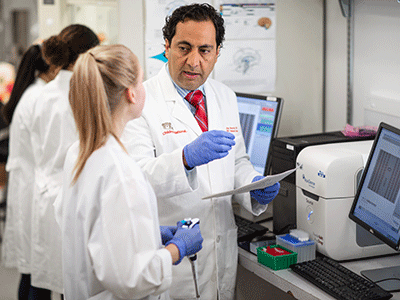Understanding end-of-life treatment preferences for adolescents

FACE-TC effectively increases communication between adolescents with cancer and their families about the patients’ preferences.
Talking about death and dying is taboo. Some families believe it is their role alone to make end-of-life healthcare decisions or they may believe pediatric advance care planning is against their religion.
In a recent trial, Maureen Lyon, Ph.D., a clinical health psychologist at Children’s National Hospital and lead author of the study, analyzed the value of high-quality pediatric advance care planning and how this enabled families to know their adolescents’ end-of-life treatment preferences.
This is the first fully powered randomized controlled trial to focus on adolescents with cancer and their engagement with their families in pediatric advance care planning conversations.
What this means
Some physicians believe it is not their role to discuss the “what ifs.” Others report that they do not have the training or time to do so. As a result, in clinical practice, adolescents living with a serious illness rarely have documented advance care plans. The default is to provide intensive treatments that potentially increase suffering.
“Despite cancer being the leading cause of disease-related death in adolescents, conversations about goals of care and documentation of end-of-life care and treatment preferences for adolescents with cancer are not a routine and standard part of care,” Dr. Lyon said.
Why it matters
Family-centered advance care planning for teens with cancer (FACE-TC) effectively increases communication between adolescents with cancer and their families about the patients’ end-of-life preferences. This meets the first challenge of pediatric advance care planning – knowledge of patient’s preferences.
This low-tech intervention commits to more deeply respecting adolescents with cancer, integrating them into health care decision-making and giving them some control in a low control situation.
The patient and family benefits
“FACE-TC strengthens communication between adolescents with cancer and their families about adolescents’ understanding of their illness, their hopes and fears, their goals of care and their end-of-life treatment preferences,” Dr. Lyon added. “With increased access to palliative care services and pediatric advance care planning, families may better understand that stopping intensive medical interventions when their child is dying is not giving up, but rather choosing how best to spend the final days of one’s life.”
Dr. Lyon and the team at Children’s National have pioneered this effort to give seriously ill adolescents a voice and help families break the ice so they know what their child would want if the worst were to happen. The team also aims to provide an extra level of support for busy clinicians so the first conversation about goals of end-of-life care does not happen in the intensive care unit.
You can read the full trial, An Intervention in Congruence for End-of-Life Treatment Preference: A Randomized Trial, in Pediatrics.
You can also read the last manuscript from this clinical trial, Effect of the Family-Centered Advance Care Planning for Teens with Cancer Intervention on Sustainability of Congruence About End-of-Life Treatment Preferences, in JAMA Network.







